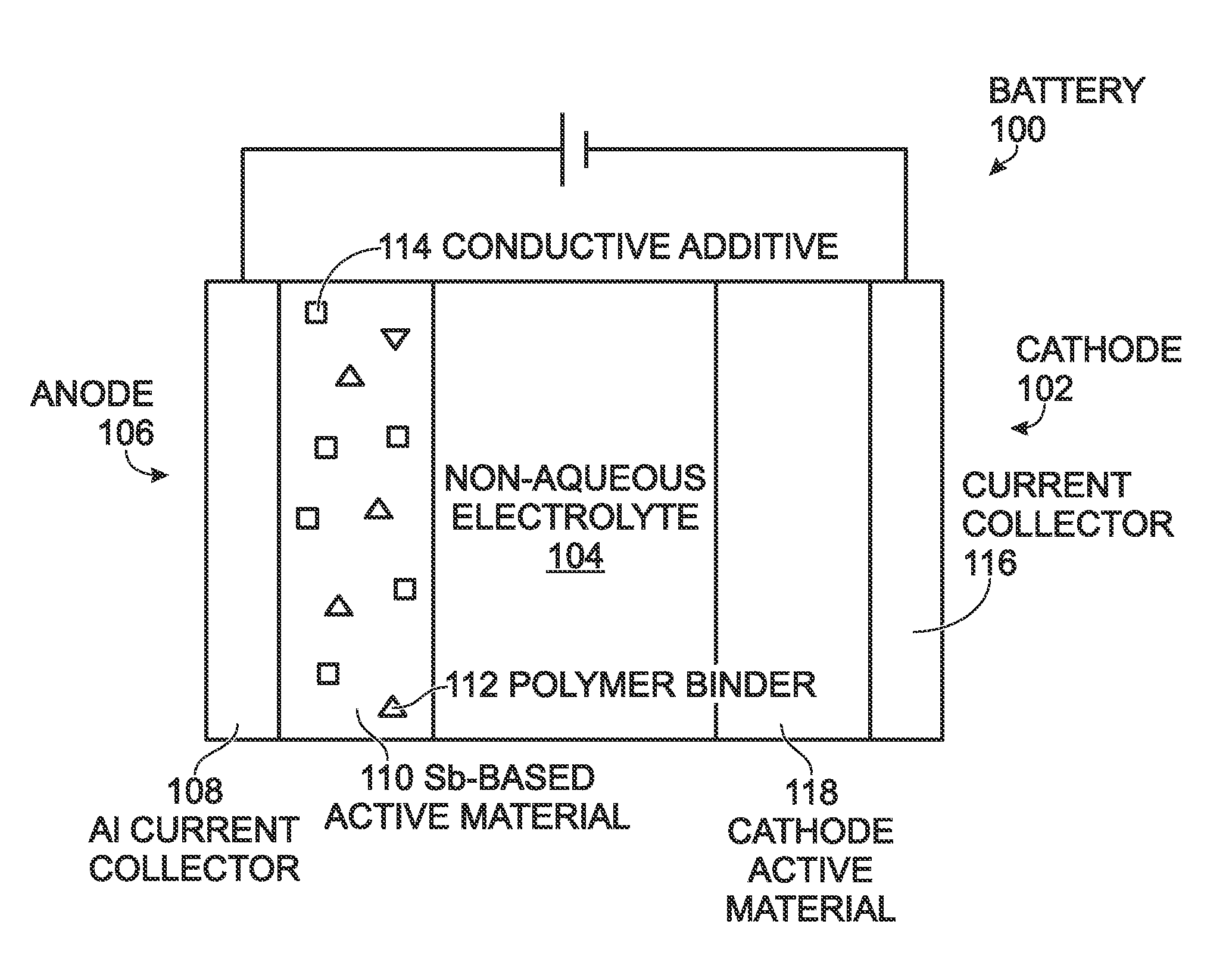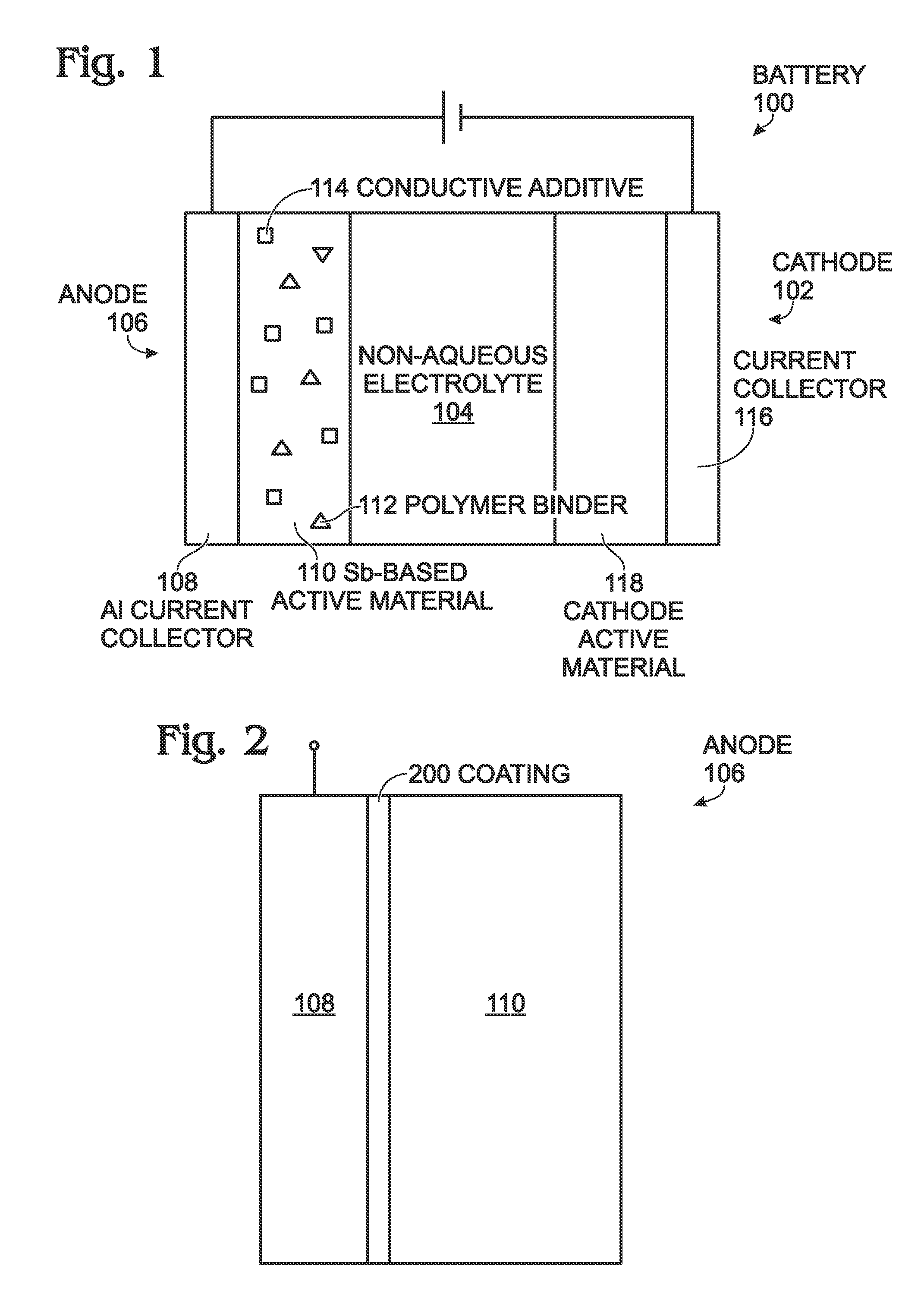Antimony-Based Anode on Aluminum Current Collector
an antimony-based anode and current collector technology, applied in the field of electrochemical batteries, can solve the problems of affecting the performance of cells, so as to improve the compatibility of active materials, improve the adhesion between active materials and current collectors, and improve the effect of adhesion
- Summary
- Abstract
- Description
- Claims
- Application Information
AI Technical Summary
Benefits of technology
Problems solved by technology
Method used
Image
Examples
example
[0082]In one example, a Sb composite anode was fabricated by pasting a mixture of Sb submicron-sized particles (Strem Chemicals Inc.), carbon (Nippon Graphite Fiber Corporation, Japan), and sodium alginate (MP Biomedicals) binder onto Al foil current collector. The mass ratio of Sb and carbon can vary from about 1 / 10 to about 10 / 1.
[0083]To characterize the anode properties, half-cell charge / discharge tests were performed using a CR2032-type coin cell. Metallic sodium was used as the counter electrode. The typical mass loading level of anode coating was about ˜2-5 mg per cm2 area of the electrode. The anode was dried at 120° C. for 12 hours under vacuum before being assembled into a coin cell in an argon (Ar)-filled glovebox. The electrolyte solution was 1 M NaPF6 / ethylene carbonate (EC) / diethyl carbonate (DEC) (1:1 by volume) (BASF). A microporous glass-fiber membrane (Whatman) was used as the separator.
[0084]FIG. 4 is a graph depicting the specific capacity and coulombic efficiency...
PUM
| Property | Measurement | Unit |
|---|---|---|
| coulombic efficiency | aaaaa | aaaaa |
| coulombic efficiency | aaaaa | aaaaa |
| coulombic efficiency | aaaaa | aaaaa |
Abstract
Description
Claims
Application Information
 Login to View More
Login to View More - R&D
- Intellectual Property
- Life Sciences
- Materials
- Tech Scout
- Unparalleled Data Quality
- Higher Quality Content
- 60% Fewer Hallucinations
Browse by: Latest US Patents, China's latest patents, Technical Efficacy Thesaurus, Application Domain, Technology Topic, Popular Technical Reports.
© 2025 PatSnap. All rights reserved.Legal|Privacy policy|Modern Slavery Act Transparency Statement|Sitemap|About US| Contact US: help@patsnap.com



